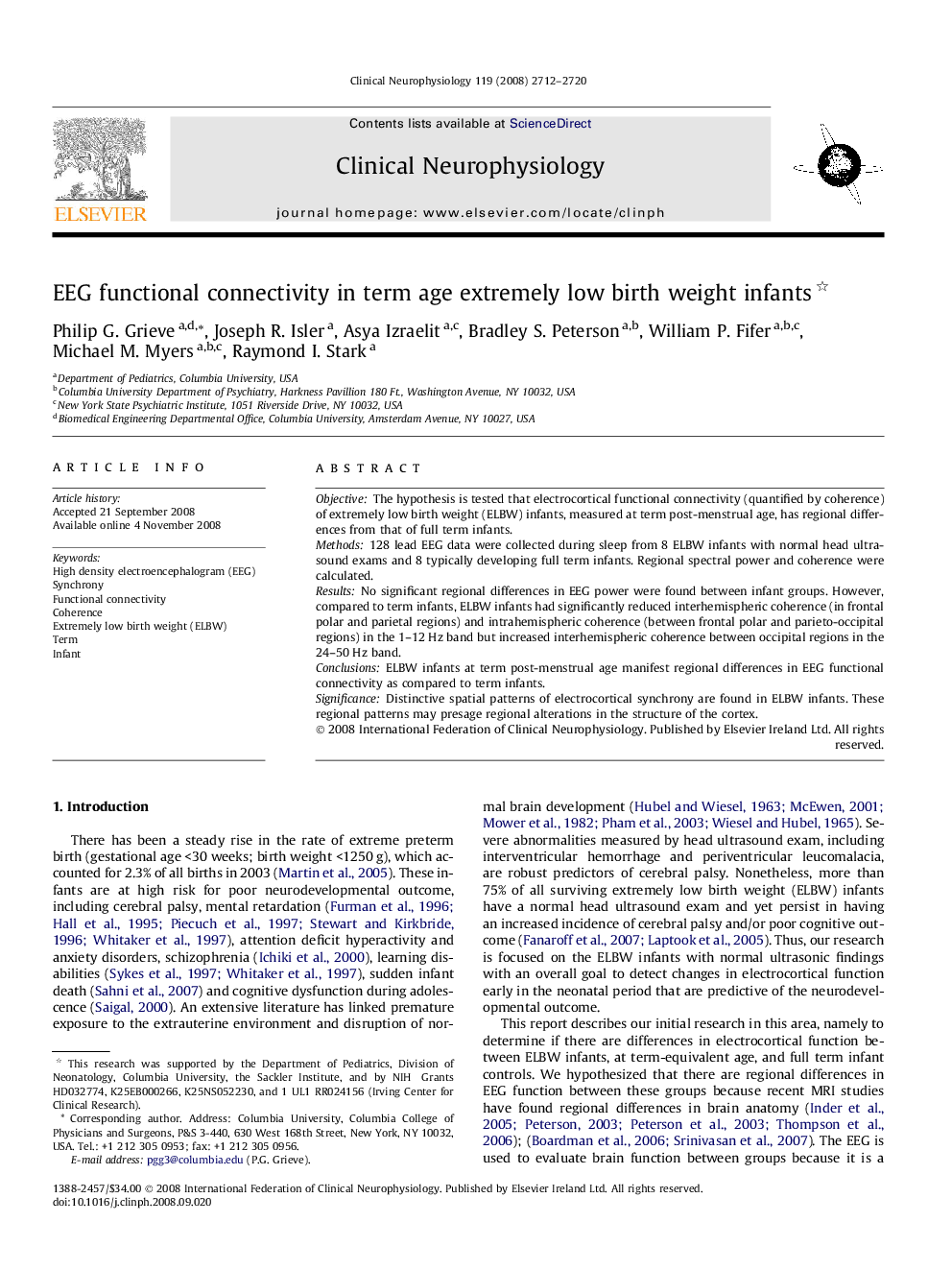| Article ID | Journal | Published Year | Pages | File Type |
|---|---|---|---|---|
| 3047552 | Clinical Neurophysiology | 2008 | 9 Pages |
ObjectiveThe hypothesis is tested that electrocortical functional connectivity (quantified by coherence) of extremely low birth weight (ELBW) infants, measured at term post-menstrual age, has regional differences from that of full term infants.Methods128 lead EEG data were collected during sleep from 8 ELBW infants with normal head ultrasound exams and 8 typically developing full term infants. Regional spectral power and coherence were calculated.ResultsNo significant regional differences in EEG power were found between infant groups. However, compared to term infants, ELBW infants had significantly reduced interhemispheric coherence (in frontal polar and parietal regions) and intrahemispheric coherence (between frontal polar and parieto-occipital regions) in the 1–12 Hz band but increased interhemispheric coherence between occipital regions in the 24–50 Hz band.ConclusionsELBW infants at term post-menstrual age manifest regional differences in EEG functional connectivity as compared to term infants.SignificanceDistinctive spatial patterns of electrocortical synchrony are found in ELBW infants. These regional patterns may presage regional alterations in the structure of the cortex.
